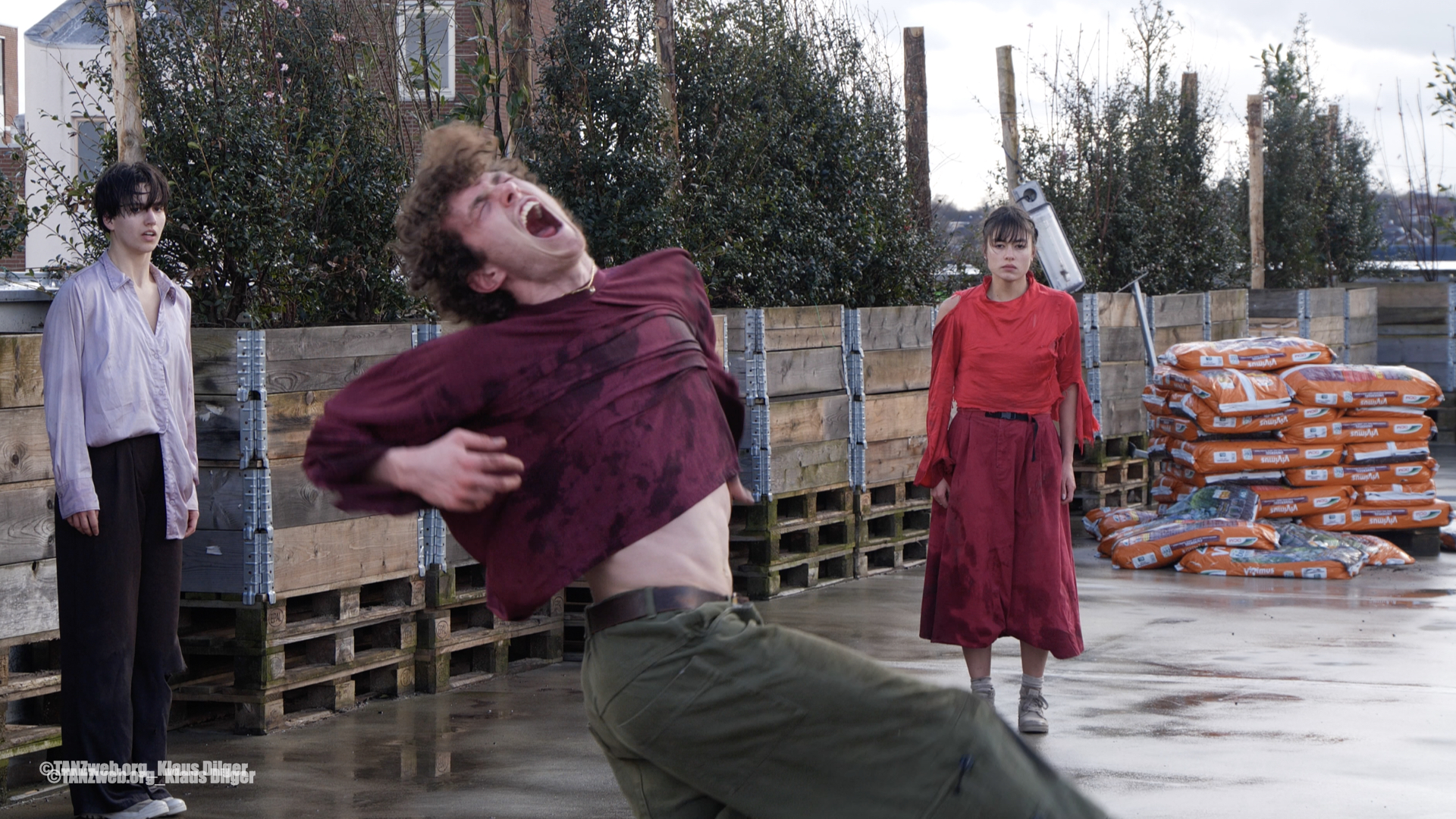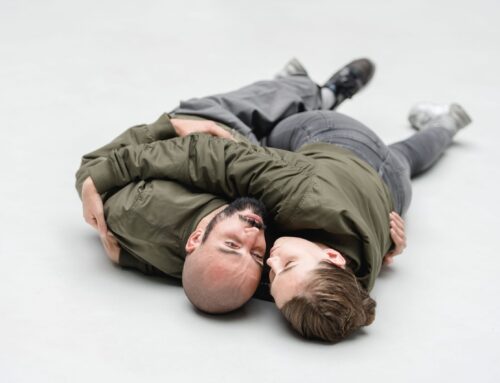schrit_tmacher justdance! Festival in Heerlen:
The call of the abyss
Confidence, despite everything: Niek Wagenaar’s „After All“ takes place in the open air. A gust of thunderstorm gives the event extra vigour.
By: Harff-Peter Schönherr
Car parks are usually not surprising. What happens in them is clear: they house cars, floor by floor.
This is also the case at Q-Park Putgraaf in Heerlen, the Netherlands: Cars, close together. But then, at the very top of the roof, on floor 7, everything is suddenly different. Cars, the enemies of nature, still have a driveway here from days gone by, but no access: the roof is a garden. Welcome to the „Heerlen Rooftop Project“.
Recycled planter boxes line the parapet, full of evergreens. 150 more are ready for urban gardening. Wheelbarrows wait between them for spring, climbing aids in bundles. „Wilderness“ is written on one of the beds. Next to it, when it gets warmer, chives grow and trumpet flowers bloom.
And it’s not just nature that is joining forces here against motorised private transport, but also culture. Niek Wagenaar’s bold choreography „After All“ is part of this. It is about environmental destruction and end-time fears. It’s about the goodness of not being alone.
A young woman in a red dress crouches on a pile of plant soil. She stands up, staggering, disorientated, rubs earth into her eyes, over her arms, over her dress, as if in mourning, points up to the sky, incredulous. Her staggering becomes, at first quite imperceptibly, dancing. Psychedelic sounds emanate from the headphones, which give the spectators on the car park deck the freedom to choose their own perspective.
The young woman seems shy, armouring herself against a world whose changes frighten her. Three strangers join her, and attraction begins, rapprochement, defence. Glances interlock, hands clasp. Fighting breaks out, gives way to calm. They circle each other, embrace each other, chase each other, support each other, flee from each other. Bodies ram into heaps of earth and plant debris, mouths widen into silent cries of despair.
The young woman lies on the ground for a long time, motionless, as if dead. One of the strangers gazes at the horizon for a long time, barely pulling himself back from the abyss that would end his agony. It is introspective, a view of the soul. It is intense, highly sensitive.
It’s icy up here, the wind blows abruptly through the barren branches. Soles scrape the ground, dirt splatters. The young woman rolls down a concrete ramp. What happens here, close to the sky, which denies itself to humans, is moving, moving.
And then it happens: While the four wrestle with their inner demons, a bank of clouds piles up, cold rain sets in, then hail, in heavy gusts. The actors‘ thin clothing sticks to their bodies, their feet stand in pools of water. It must be an ordeal, but it suits the mood and message of the production perfectly. Minutes later, the demons have used up their power and the expressions of the four begin to relax, then the second small miracle: the sun breaks through, blindingly bright.
The weather unexpectedly becomes the fifth actor. The place itself, with its vastness, with its promising view of the wooded hilltops on the edge of the city, is the sixth. Both of their roles in Wagenaar’s play about woundedness and isolation, about hope for happiness and togetherness, should not be underestimated.
At the end, the woman in the red dress sits back where it all began. No more staggering; her gaze has cleared. The three strangers have become friends. They all look up together. It is bright there. The adventure of existence is no longer a nightmare.
The dance that the roof of the city is experiencing here is a dance of life. The everyday life to which we descend afterwards can no longer harm us.
Car parks can surprise. Very.













